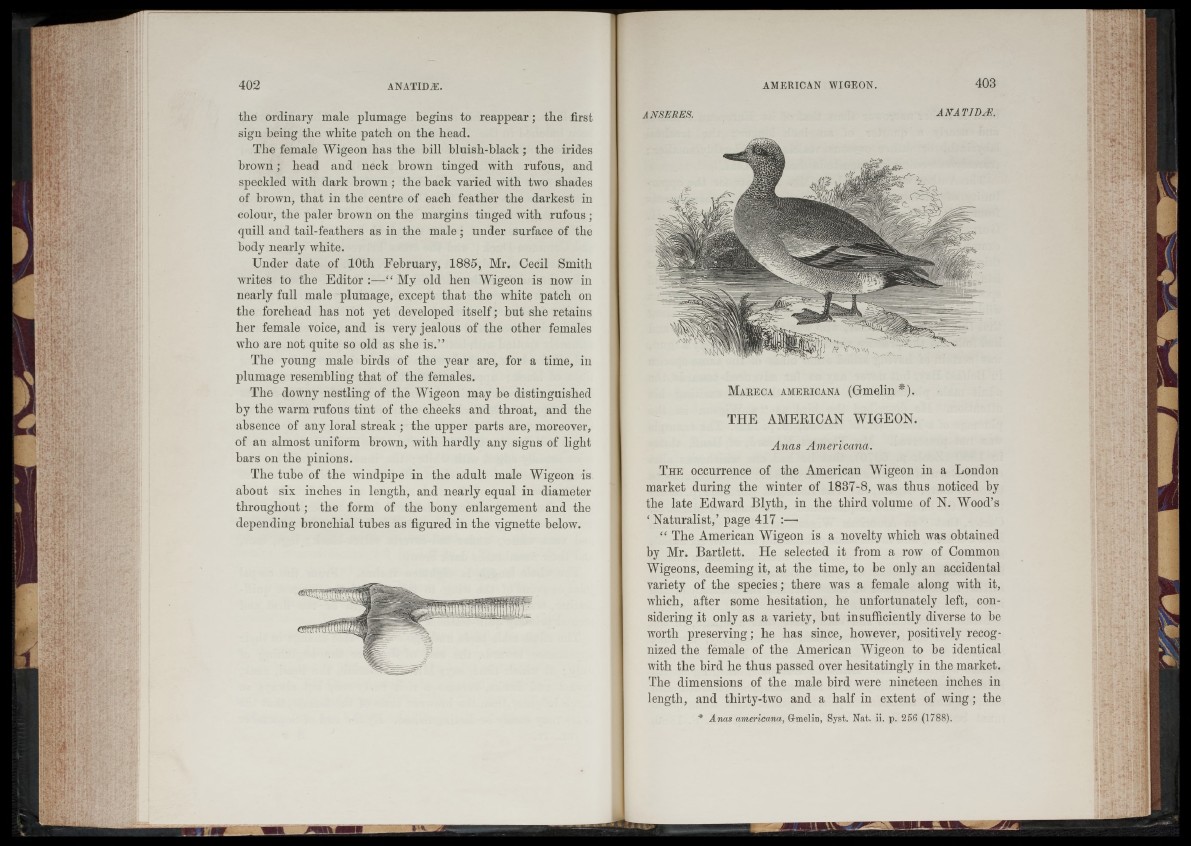
the ordinary male plumage begins to reappear; the first
sign being the white patch on the head.
The female Wigeon has the bill bluish-black; the irides
brown; head and neck brown tinged with rufous, and
speckled with dark brown ; the back varied with two shades
of brown, that in the centre of each feather the darkest in
colour, the paler brown on the margins tinged with rufous;
quill and tail-feathers as in the male; under surface of the
body nearly white.
Under date of 10th February, 1885, Mr. Cecil Smith
writes to the Editor :—“ My old hen Wigeon is now in
nearly full male plumage, except that the white patch on
the forehead has not yet developed itself; but she retains
her female voice, and is very jealous of the other females
who are not quite so old as she is.”
The young male birds of the year are, for a time, in
plumage resembling that of the females.
The downy nestling of the Wigeon may be distinguished
by the warm rufous tint of the cheeks and throat, and the
absence of any loral streak ; the upper parts are, moreover,
of an almost uniform brown, with hardly any signs of light
bars on the pinions.
The tube of the windpipe in the adult male Wigeon is
about six inches in length, and nearly equal in diameter
throughout; the form of the bony enlargement and the
depending bronchial tubes as figured in the vignette below.
A NSERES. ANATID/E.
M areca Americana (Gmelin *).
THE AMERICAN WIGEON.
Anas Americana.
The occurrence of the American Wigeon in a London
market during the winter of 1837-8, was thus noticed by
the late Edward Blyth, in the third volume of N. Wood’s
‘ Naturalist,’ page 417 :—•
“ The American Wigeon is a novelty which was obtained
by Mr. Bartlett. He selected it from a row of Common
Wigeons, deeming it, at the time, to be only an accidental
variety of the species; there was a female along with it,
which, after some hesitation, he unfortunately left, considering
it only as a variety, but insufficiently diverse to he
worth preserving; he has since, however, positively recognized
the female of the American Wigeon to be identical
with the bird he thus passed over hesitatingly in the market.
The dimensions of the male bird were nineteen inches in
length, and thirty-two and a half in extent of wing; the
* Anas americana, Gmelin, Syst. Nat. ii. p. 256 (1788).